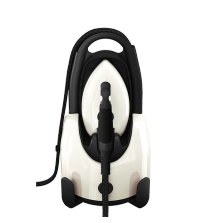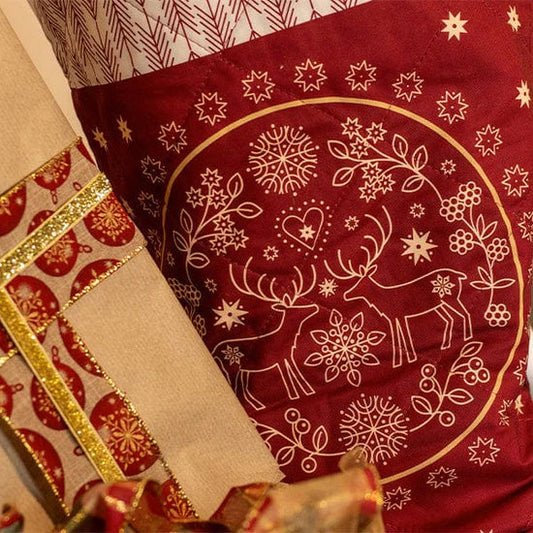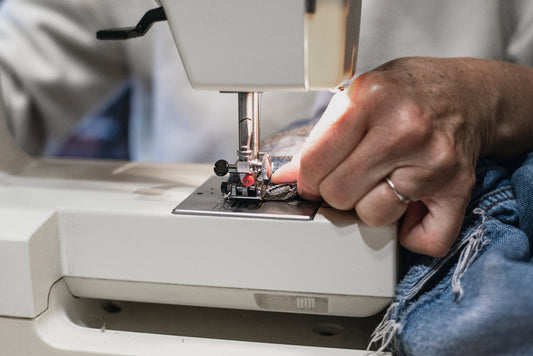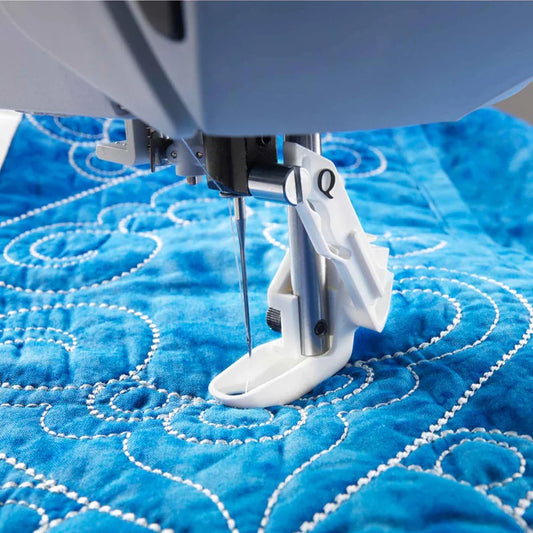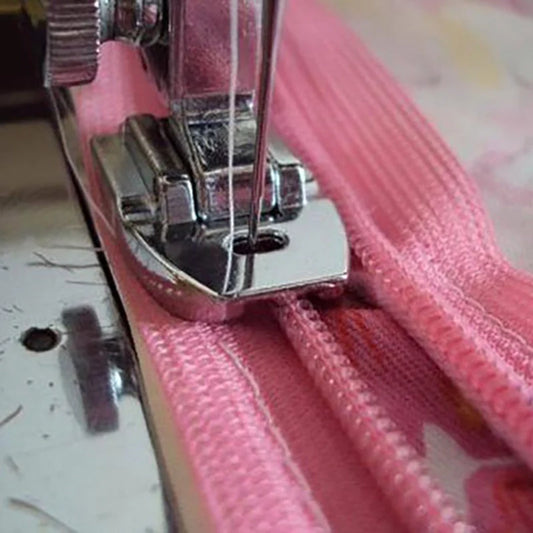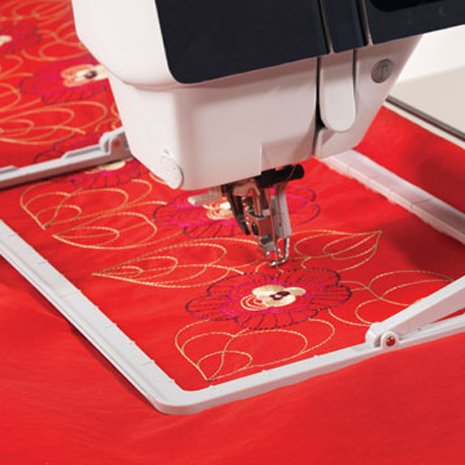Could the tiniest part of your machine be the reason your seams pucker, your thread shreds, or your stitches skip? Many sewists blame tension, yet the real fix often comes down to a smarter choice in needle size.
Coming sections explain how to select needle size for sewing with confidence, demystify numbering systems, and map common fabrics to reliable pairings. With a few checks and a quick sample seam, they can prevent damage and achieve clean, even stitches.
Key Takeaways
-
Match needle diameter to fabric weight and thread size to prevent damage and skipped stitches.
-
Too small causes snapping and bird‑nesting; too large leaves holes and puckering.
-
Test with your actual fabric and thread to fine‑tune how to select needle size for sewing.
-
Replace needles every 6–8 hours and at the start of each project for consistent results.
-
Use this sewing needle guide to align sewing needle sizes with real fabrics, from chiffon to canvas.
Understanding sewing needle sizing systems and parts
Packages list two numbers, like 80/12, showing both metric and U.S. systems. NM 80 means the shaft is 0.80 mm wide. The 12 is the traditional Singer size. On a sewing needle size chart or guide, ranges like 60/8 through 120/19 help match fabric and thread.
Needle anatomy shapes stitch quality. The shank mounts into the machine and may have a flat side for alignment. The shaft runs to the tip and carries the long groove that shelters the thread.
The eye must fit the thread. Topstitch and metallic needles use larger, elongated eyes to prevent shredding. The point style varies: sharp tips pierce wovens, while ballpoint tips ease between knit loops.
Using a thin needle on heavy canvas or denim may bend or snap. An oversized needle on lawn or voile can leave holes and cause puckers. A quick check against a sewing machine needle size guide or chart supports choosing needle sizes for sewing with fewer issues.
How do you know what size needle to use when sewing?
Start by looking at the fabric. Its weight and structure guide you in choosing the right needle size. Fine sizes work well with lightweight fabrics, while thicker sizes are better for heavy ones. Make sure the thread you choose glides smoothly through the fabric without catching.
Consider the sewing task too. Different tasks like topstitching or making buttonholes might require a different needle size.
Sew Yeah Quilting suggests using 60/8 for very fine fabrics and 70/10 for delicate ones. For thicker fabrics, use 75/11 or higher.
Thread choice is also important. Sew Yeah Quilting recommends using the smallest needle size that works well with your thread. Fine threads need smaller needles, while thicker threads might require larger ones.
-
Performance check: skipping stitches or shredding means size up or try a specialty type.
-
Puckers or visible holes mean size down or switch point style.
-
Always test on a scrap with the intended thread before sewing the piece.
For best results, replace your needle every 6–8 hours or at the start of each project. Don't rely on color codes; check the package for size and type.
Choosing the right needle type for the project
The type of fabric and sewing technique are key. A sewing needle guide helps match needle types and sizes with your fabric.
For thick fabrics, Jeans/Denim needles have a strong blade. Leather needles cut through real leather. Quilting needles are slim for sewing through layers. Embroidery needles have a special scarf for rayon or polyester thread.
Thread choice is important too. Metallic needles protect foil threads, and Topstitch needles are for heavy stitching. Specialty needles like Double and Triple sew parallel lines, and Quick Threading needles are easy to thread.
Always match needle type and size. For denim, use a Jeans needle in 90/14 to 110/18. For knits, Ball Point or Stretch needles in 75/11 to 90/14 work well. Check if your sewing machine can handle zigzag plates for twin and triple needles.
With the right needle sizes and types, your sewing projects will look great.
-
Universal: general knits and wovens; pair with the sewing needle guide for everyday threads.
-
Ball Point/Stretch: jersey, spandex, and elastic blends; reduces skipped stitches.
-
Microtex/Sharp: silks, batiks, microfibers; precise, straight seams.
-
Jeans/Denim: twill, canvas, and multilayers; reinforced blade for penetration.
-
Leather: cutting point for real leather; avoid on woven fabric.
-
Quilting: tapered shaft for layers and batting.
-
Embroidery/Gold Embroidery: large eye and coating for dense stitch counts.
-
Metallic/Topstitch: elongated or extra-large eye to protect specialty threads.
-
Twin/Triple: parallel rows; verify spacing and plate width before sewing.
-
Hemstitch (Wing)/Quick Threading: decorative cutwork or easier threading in select sizes.
Use the sewing machine needle size guide with these categories to match fabric, thread, and technique. Consistent choices across sewing needle sizes improve stitch quality, limit puckering, and reduce breakage.
Conclusion
Choosing the right needle size for sewing is all about three things: fabric, thread, and technique. Use both metric and US sizes to find the perfect match quickly. For fine fabrics, sizes 60/8–70/10 are best.
For light to medium fabrics and many garments, sizes 75/11–80/12 are ideal. Everyday fabrics and knits do well with sizes 90/14. For heavy materials, sizes 100/16–120/20 are the way to go. A good sewing needle guide will always suggest these sizes.
It's also important to match the needle type to the task. Universal needles work for many tasks. Ball Point or Stretch needles are great for knits. Microtex needles are perfect for high-thread-count wovens.
Jeans needles are best for denim and canvas. Leather needles are for working with leather. Quilting needles are for layered projects. Embroidery, Metallic, and Topstitch needles are for special threads and designs.
Hemstitch needles create openwork designs. Always check the package for size and type, as different brands use different color codes.
Using a needle that's too thin can cause problems like snapping or skipping stitches. A needle that's too thick can lead to holes and puckers. A good sewing needle guide will warn you about these issues.
Before sewing the final seam, test the needle on scraps. Look for smooth penetration, even tension, and a clean stitch. Remember, fabric, thread, and technique are key when choosing a needle size. A clear sewing needle size chart and consistent habits will help you achieve high-quality stitches.
FAQ
How do you know what size needle to use when sewing?
Start by looking at the fabric's weight and structure. Then, match the thread size to the needle. Choose the smallest needle that carries the thread smoothly without damaging the fibers.As a quick guide: 60/8–70/10 for very fine fabrics, 75/11–80/12 for light to medium garments, 90/14 for medium to heavy wovens and knits, and 100/16–120/20 for heavy or layered materials. Always test on a scrap.
What do the numbers like 80/12 mean on sewing machine needles?
The first number is the metric size (NM), which is the shaft diameter in millimeters times 100. So NM 80 equals 0.80 mm. The second is the U.S. (Singer) size. Packages often show both, for example 80/12. Larger numbers mean a thicker, stronger needle.
Which sewing machine needle size should I use for different fabrics?
Try these pairings: 60/8 for lingerie, silk, fine lace; 70/10 for chiffon, net, delicate cottons; 75/11 for voile, organza, satin, dress shirts, Lycra/Spandex; 80/12 for tricot, many silks, light canvas; 90/14 for poplin, linen, light wool, jersey, muslin; 100/16 for corduroy, denim, heavy suiting; 110/18 for heavy denim, leather, upholstery, faux fur; 120/20 for very heavy fabrics.
How do needle types differ, and which should I pick?
Match type to fabric and task. Universal handles many basics. Ball Point or Stretch protects knit loops and elastic fabrics. Microtex/Sharp gives crisp seams on high-thread-count wovens, silks, and microfibers. Jeans/Denim has a reinforced blade for dense weaves. Leather has a cutting point for hides. Quilting glides through layers and batting. Embroidery, Metallic, and Topstitch have larger eyes and special grooves for specialty threads.
Visit our website today at Sew Yeah Quilting for a wide selection of sewing equipment, materials, patterns, and more!


